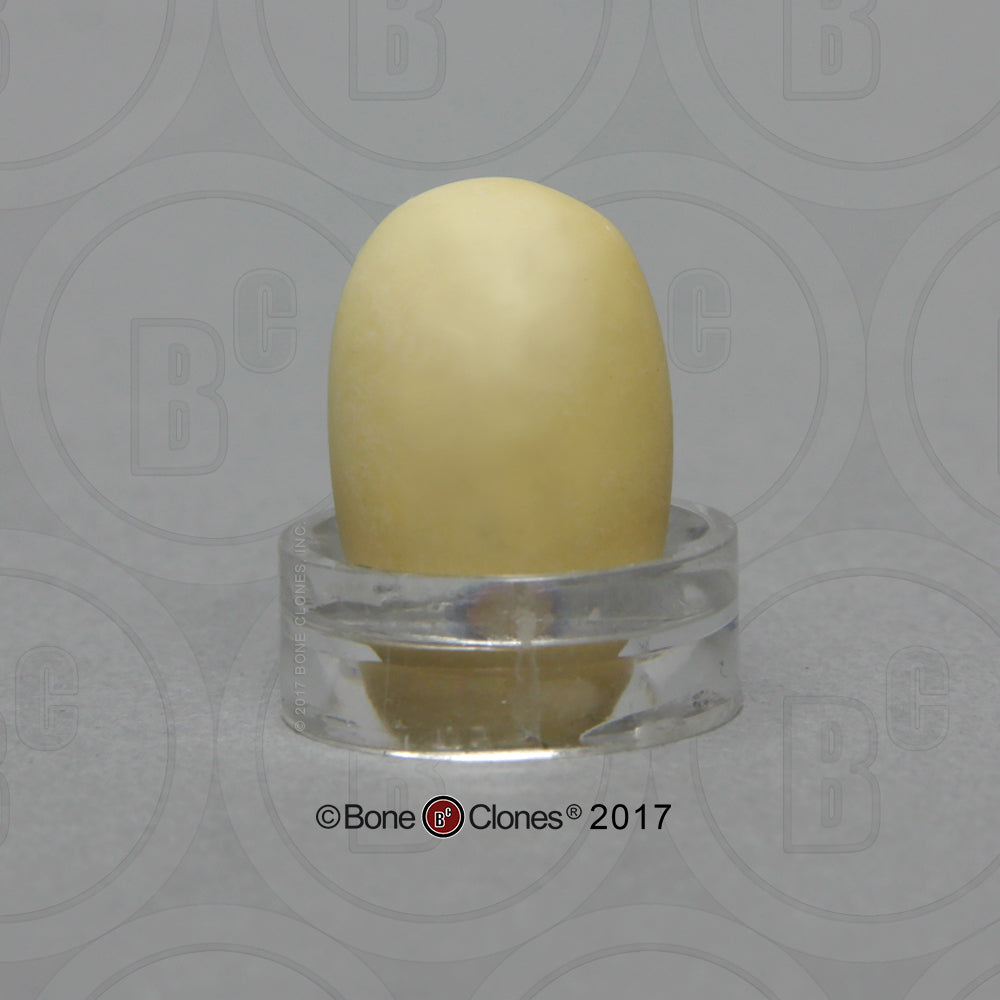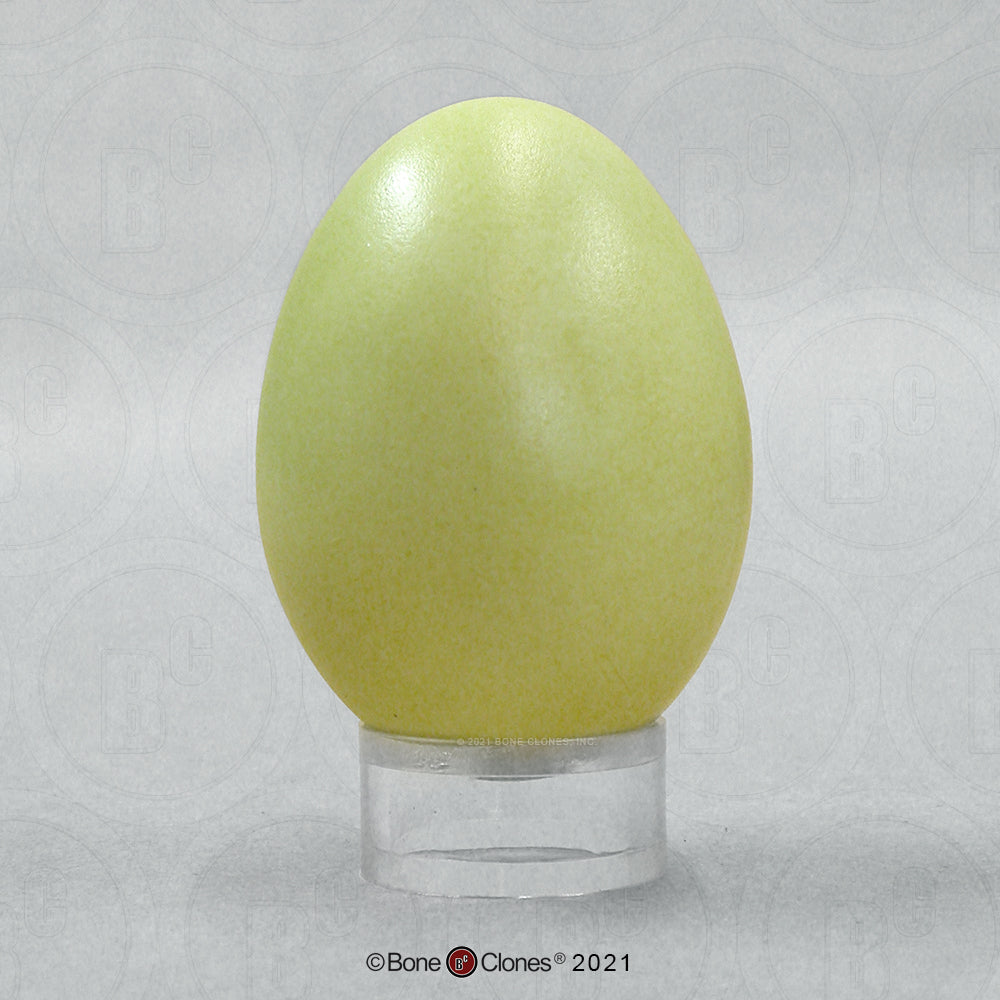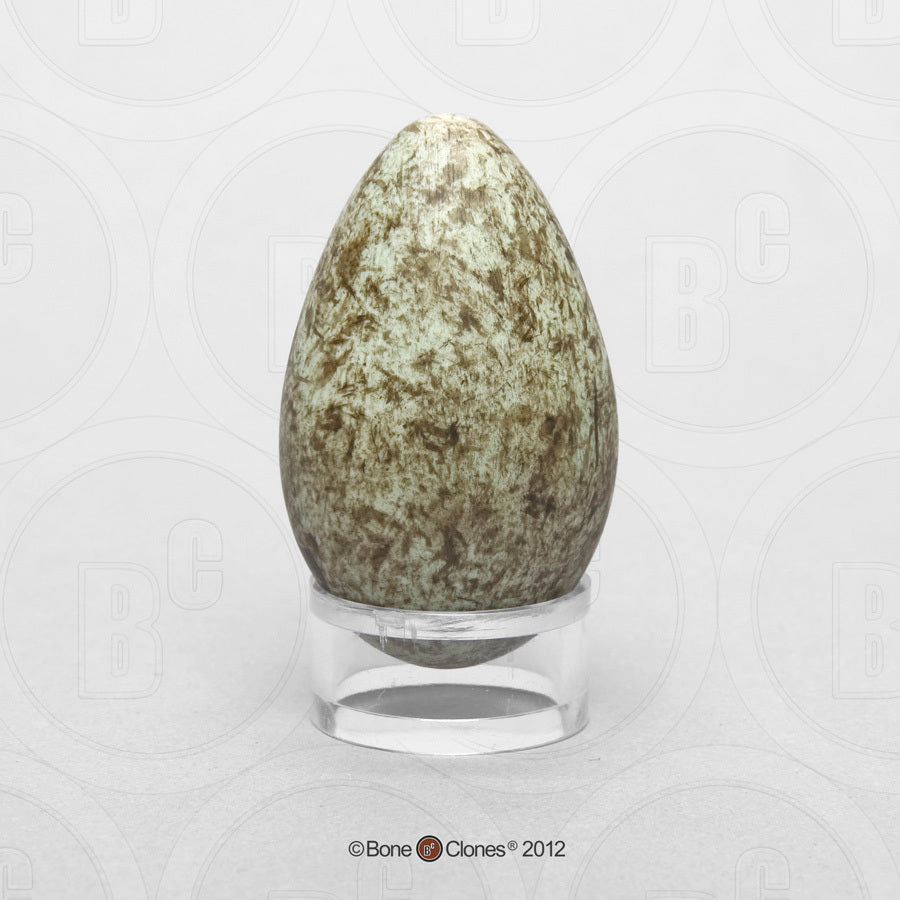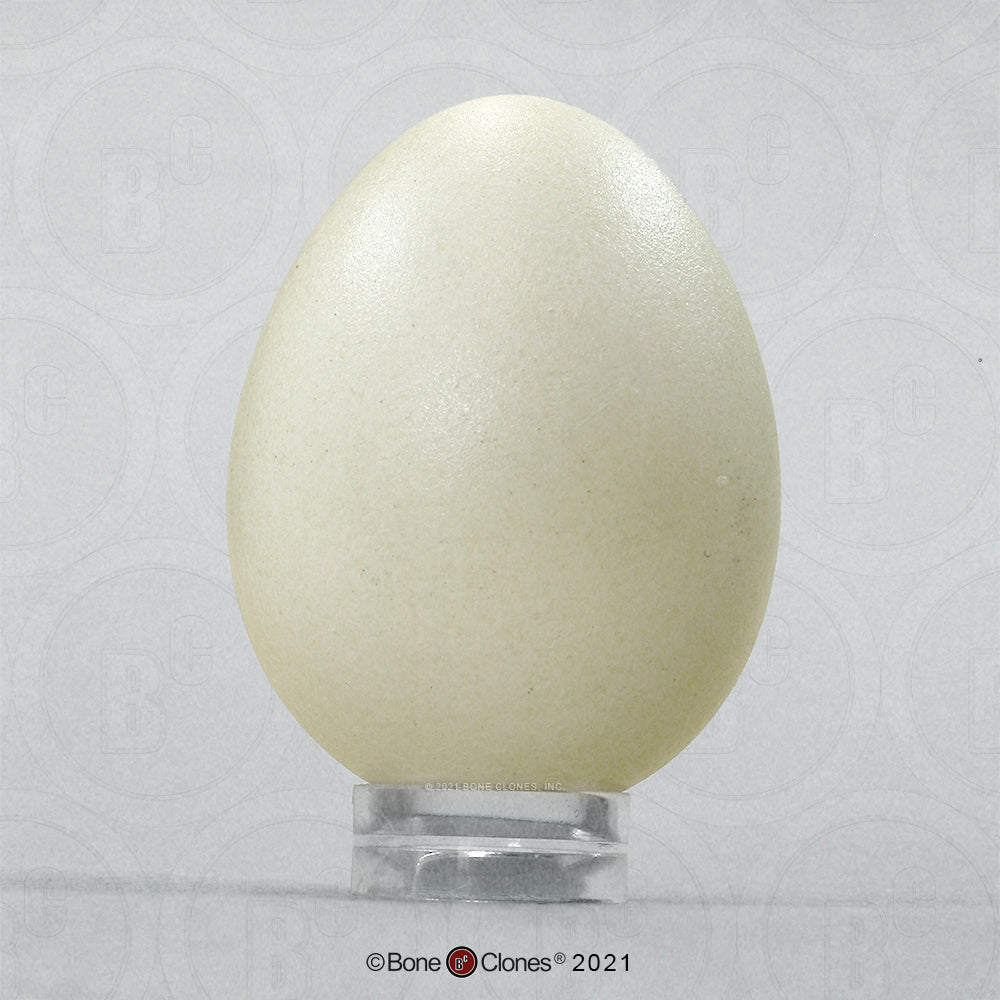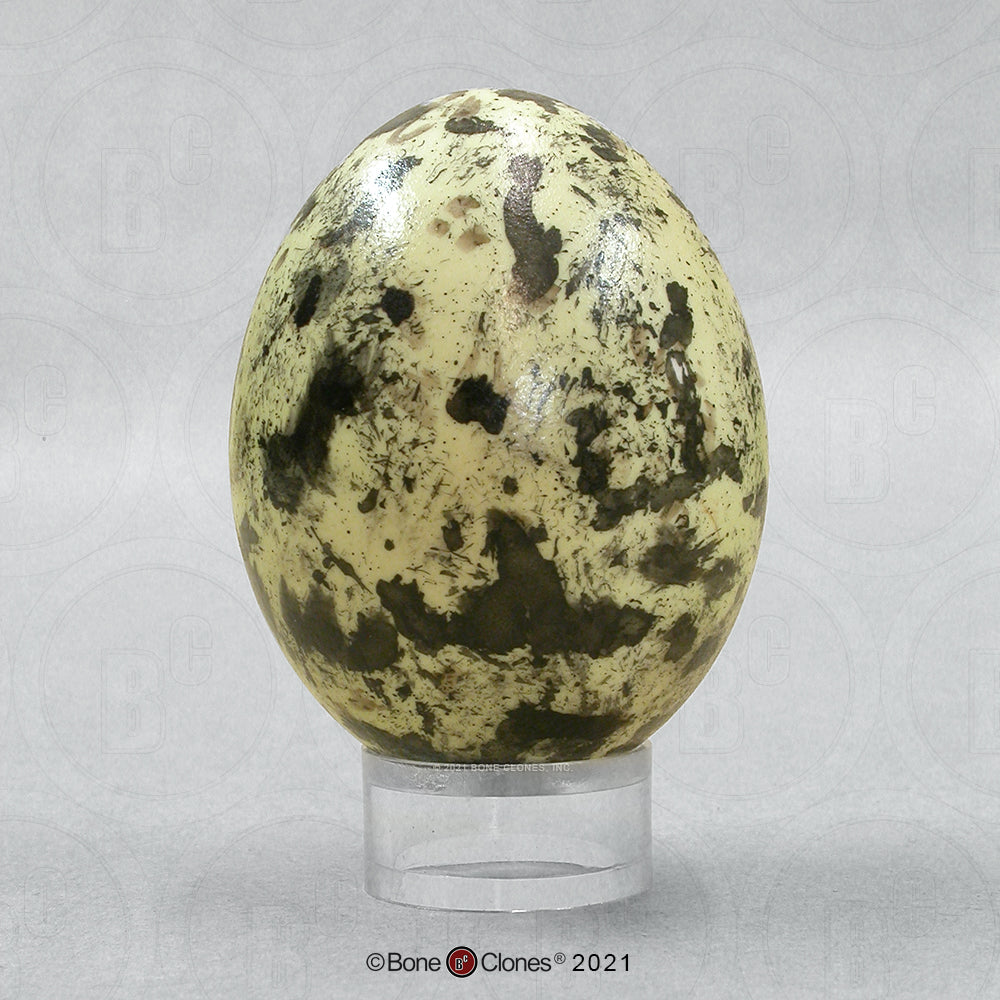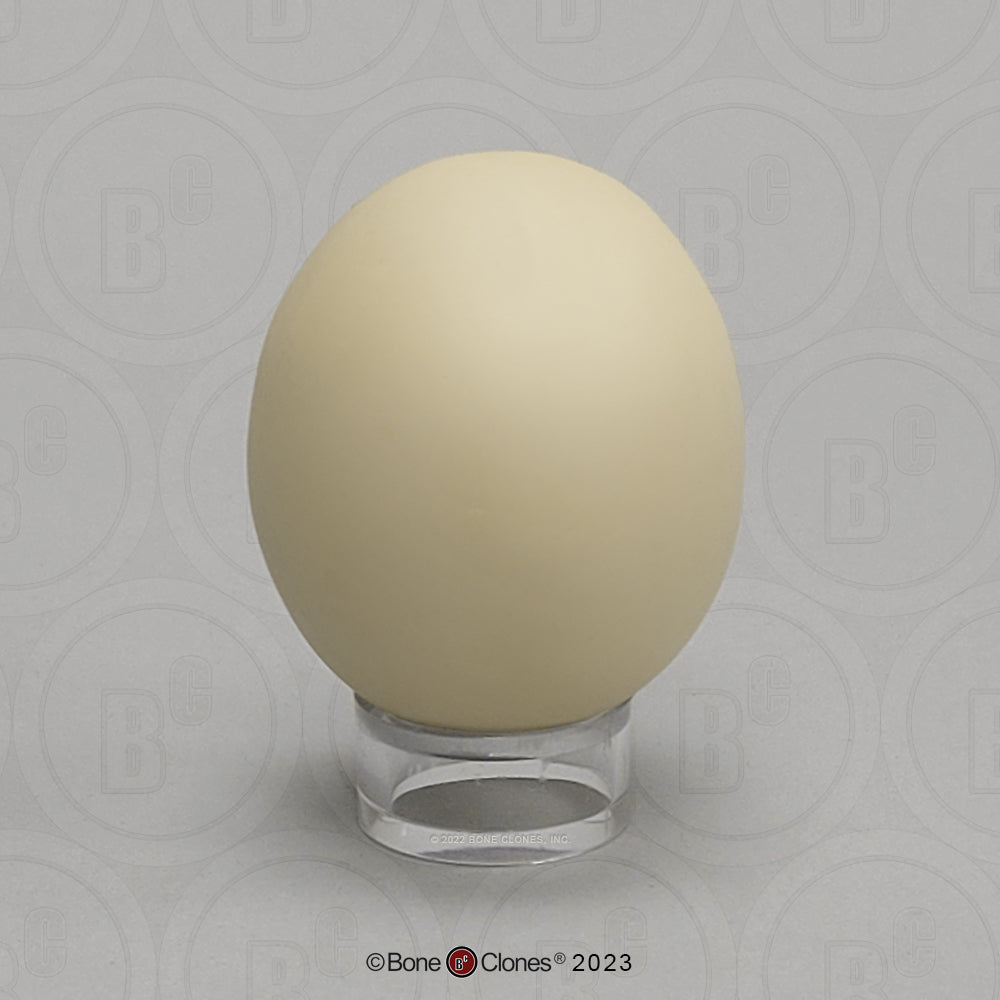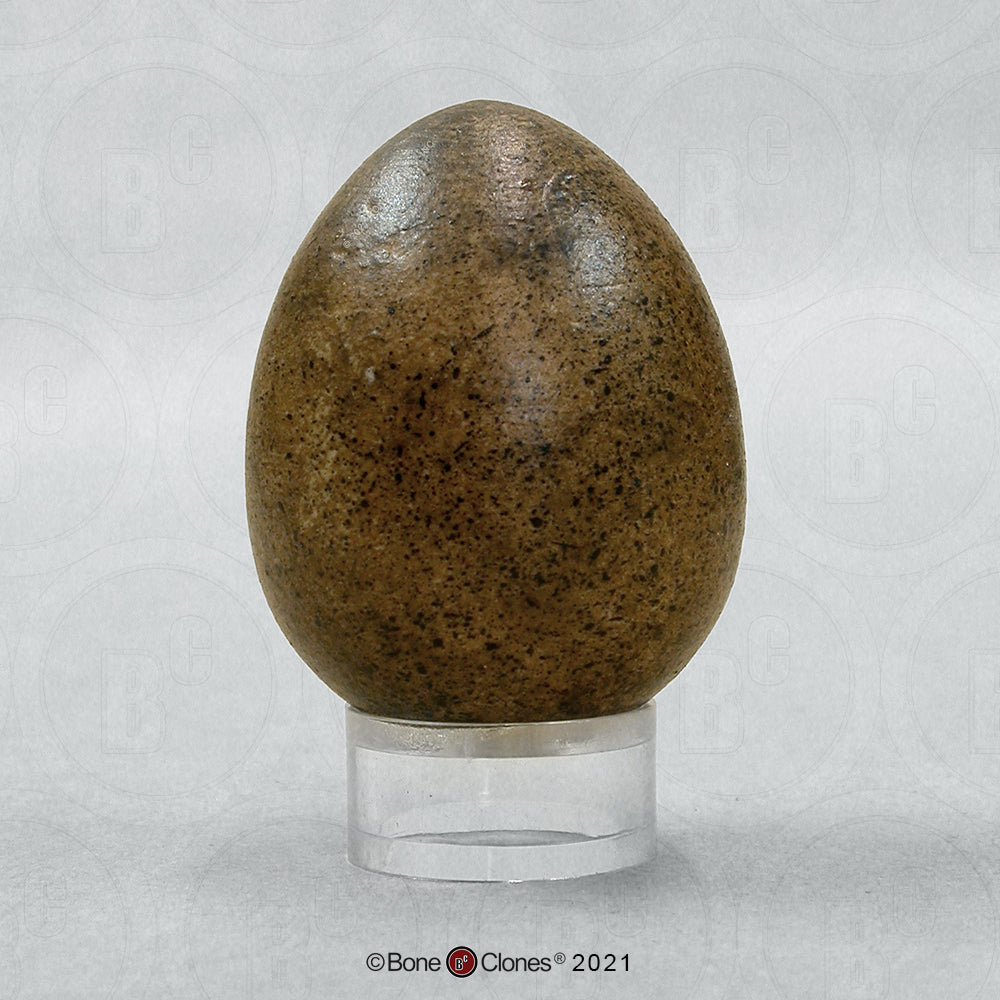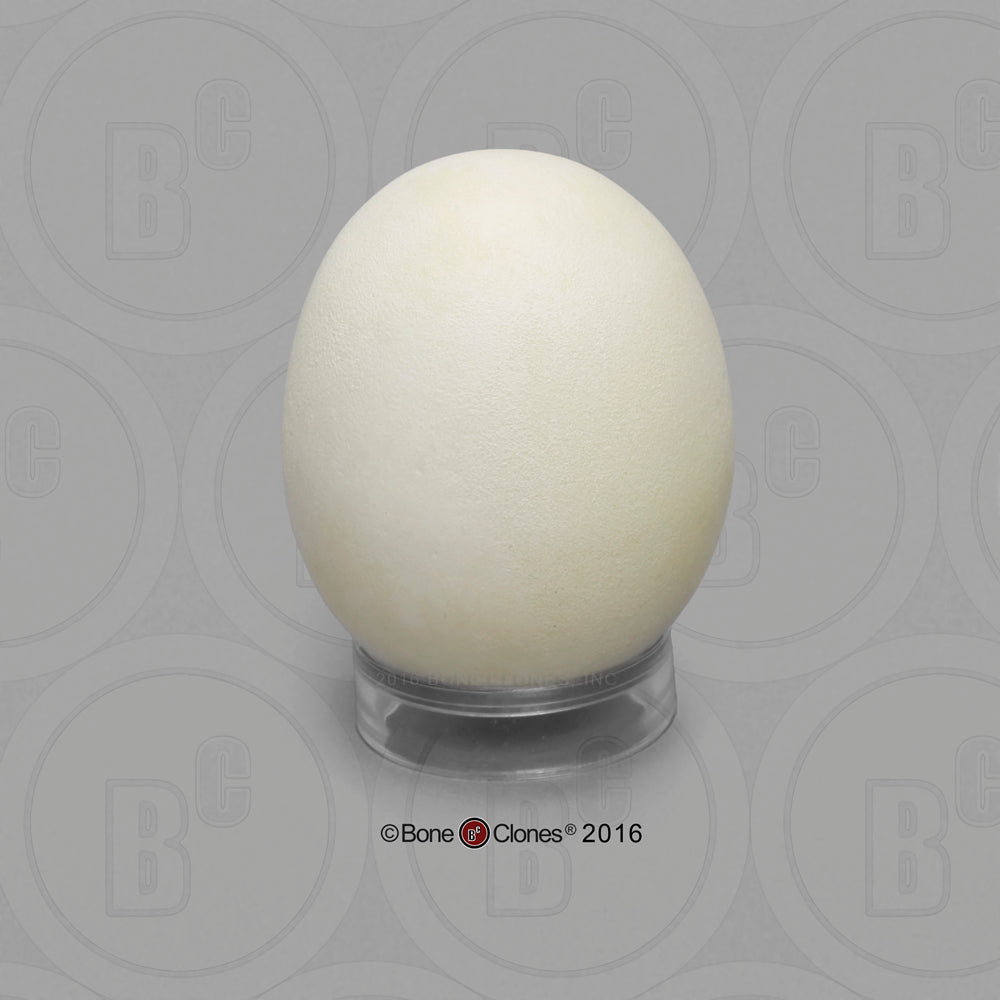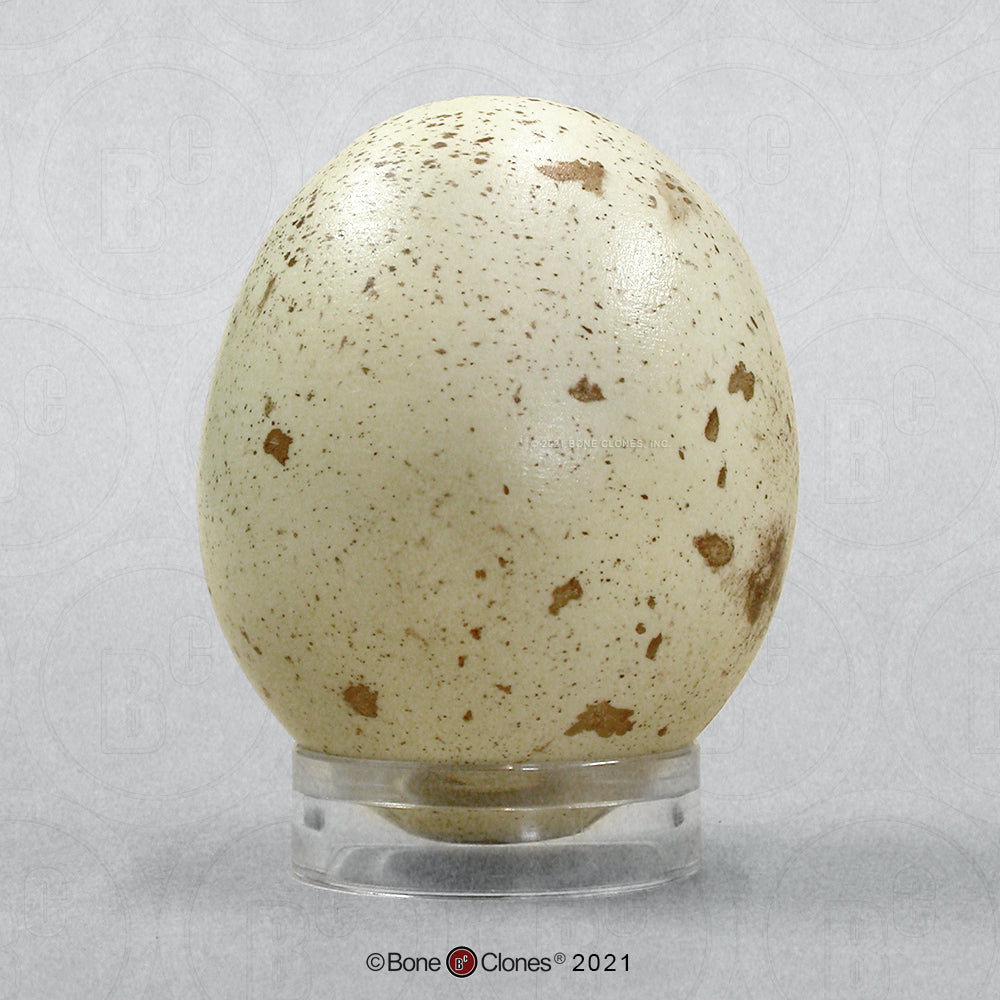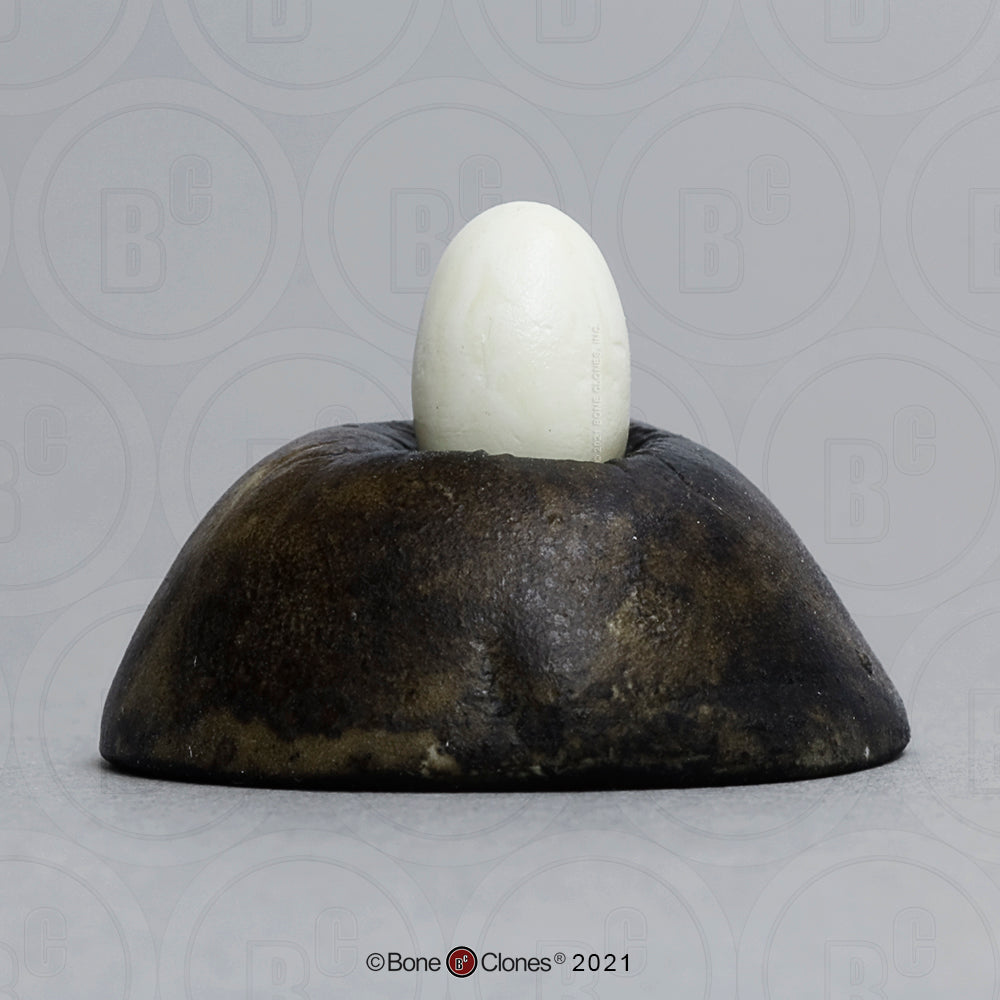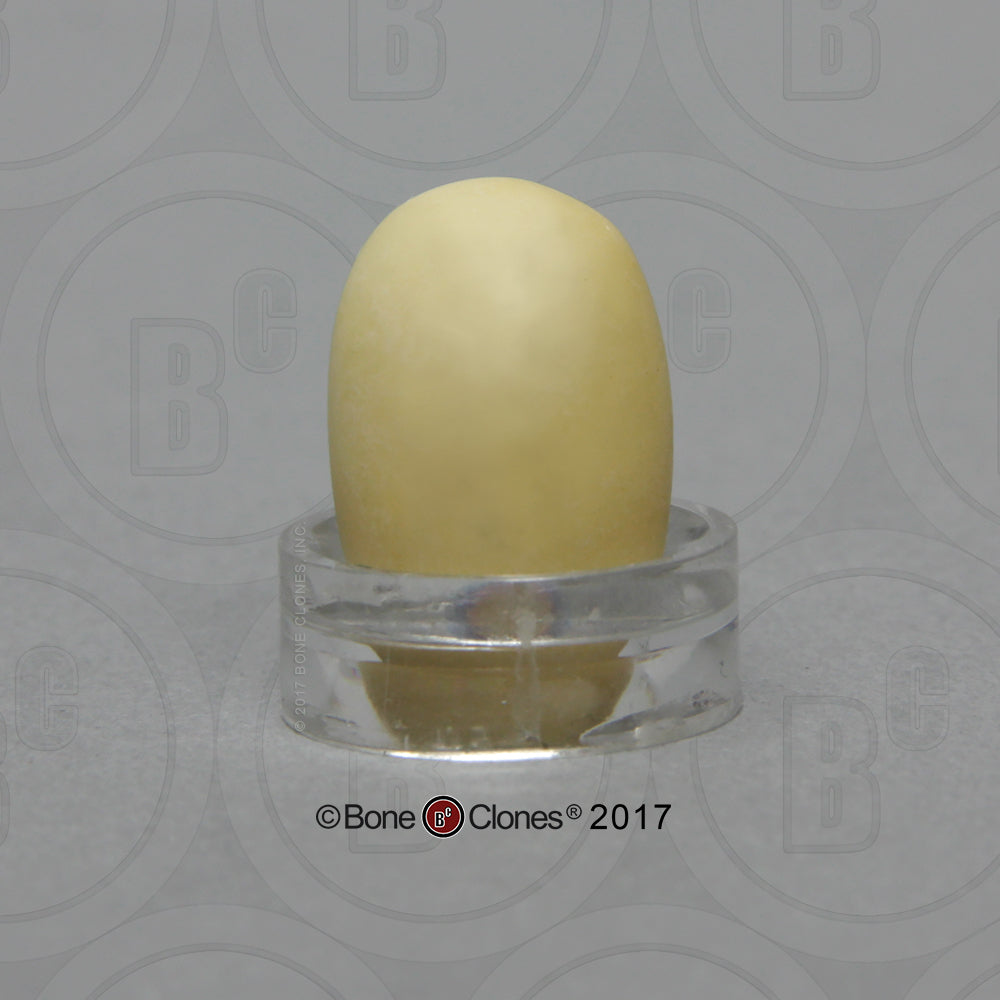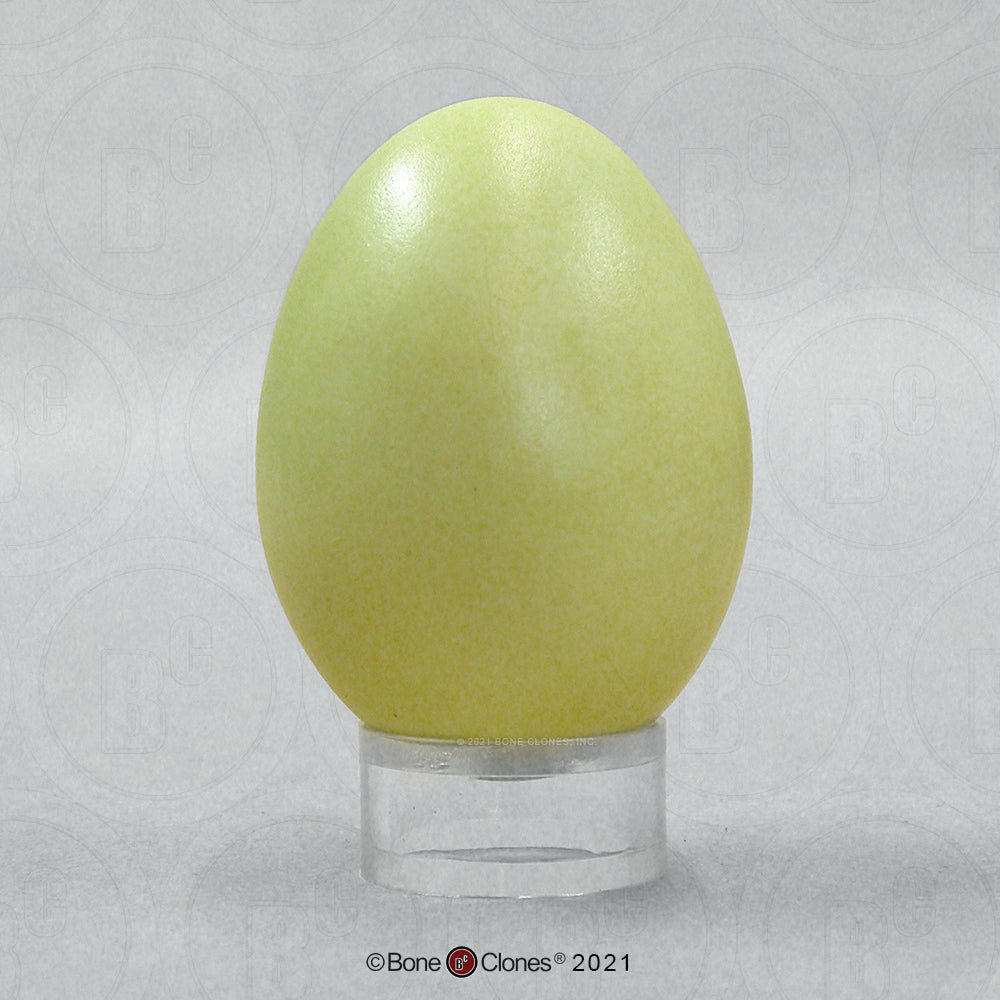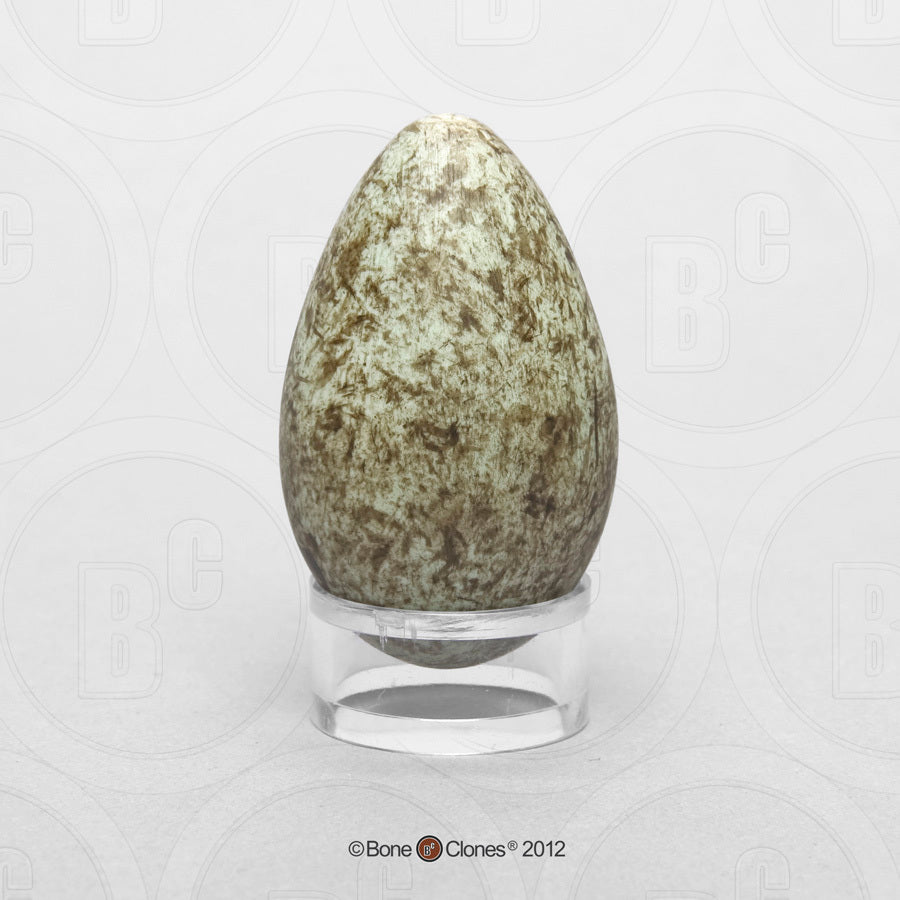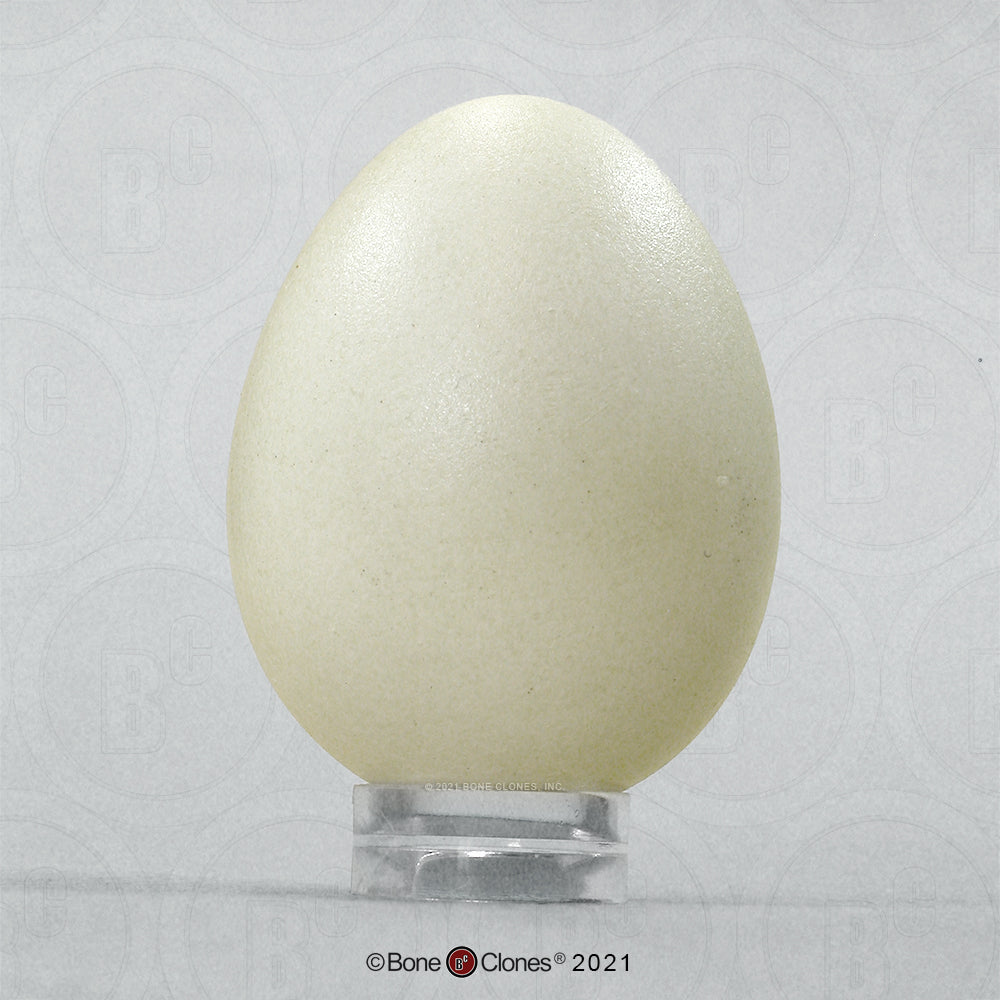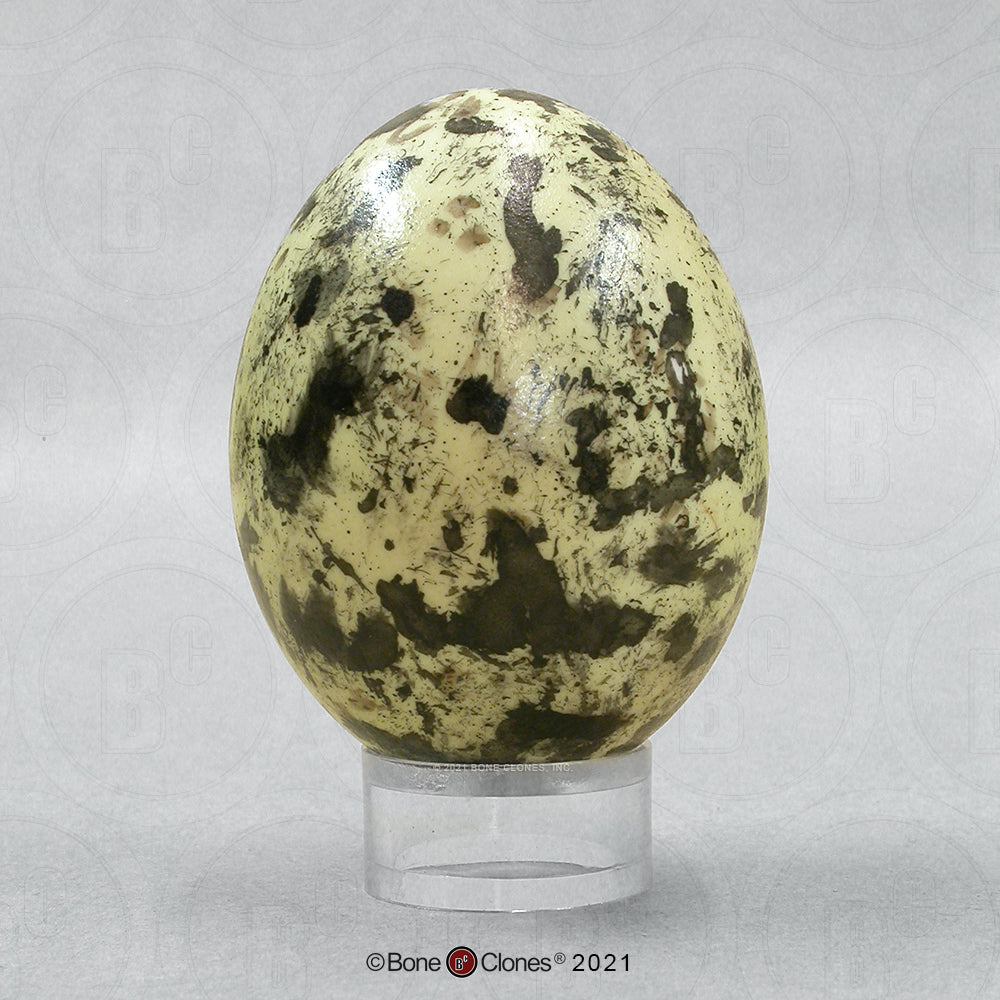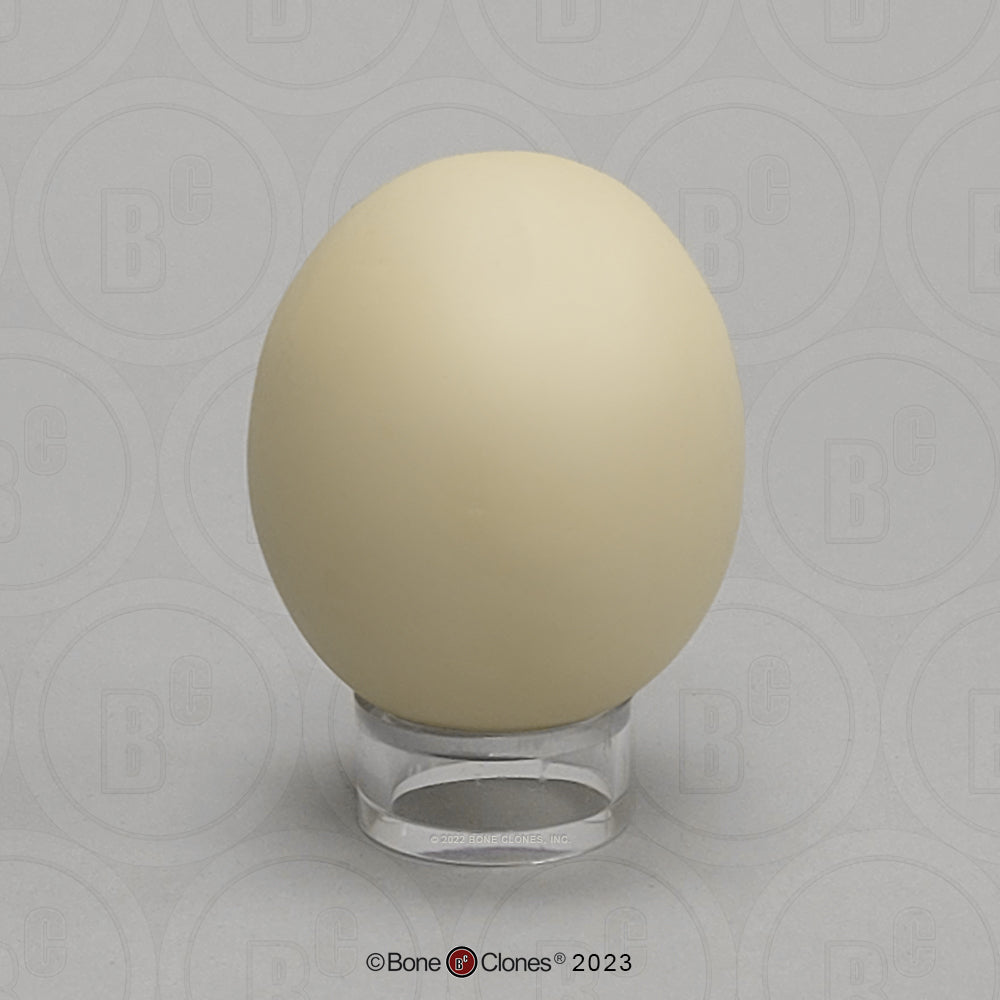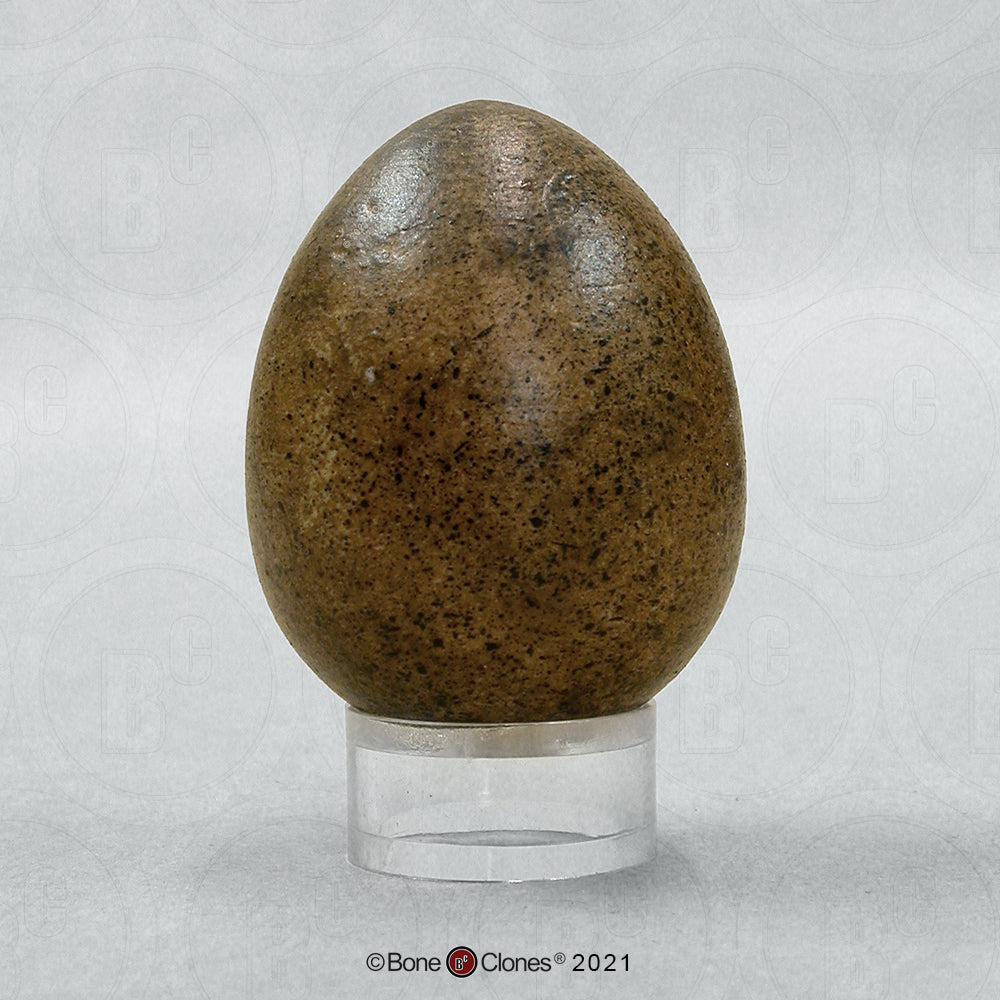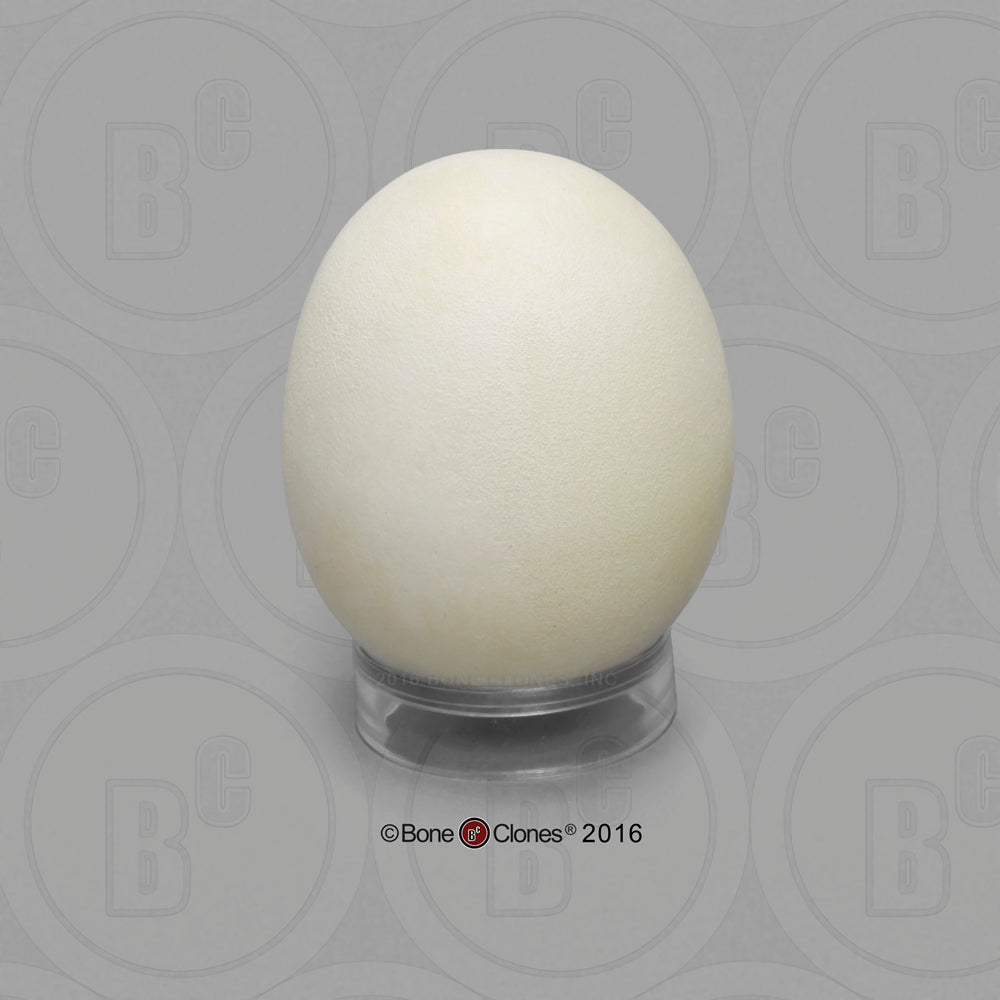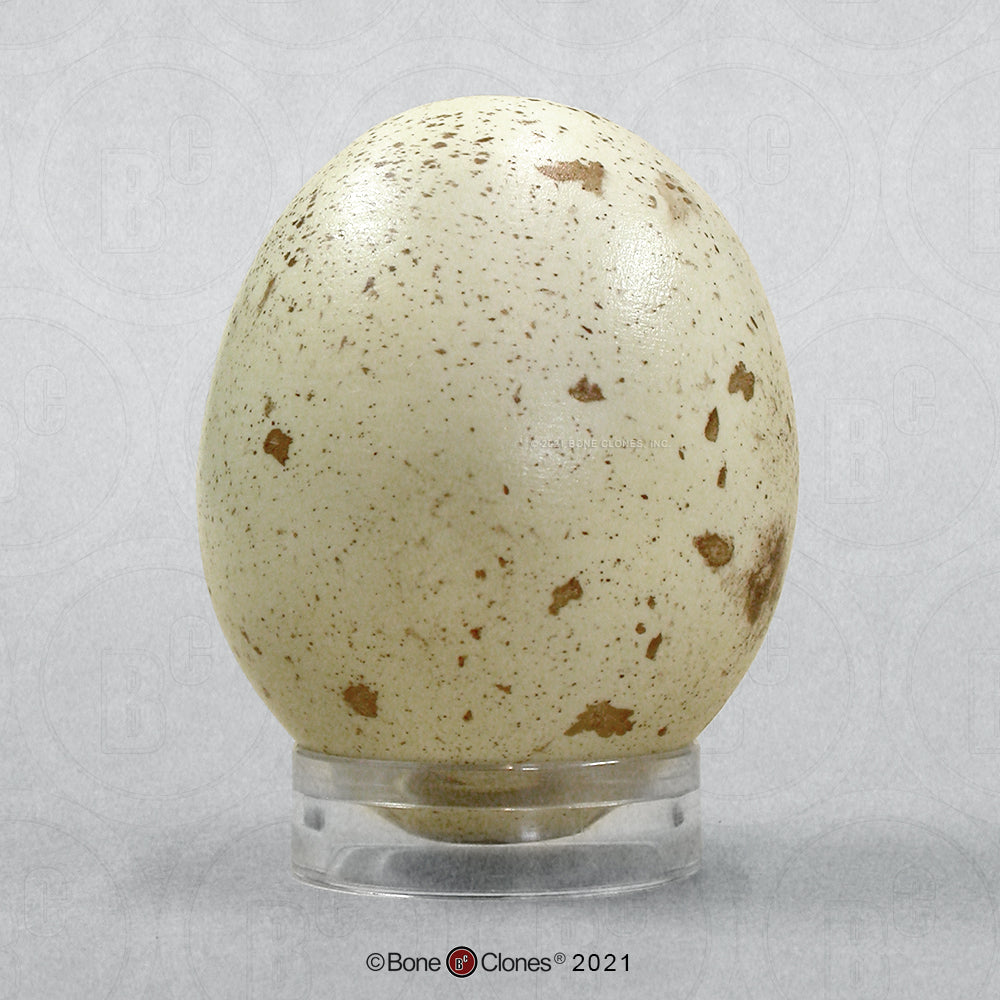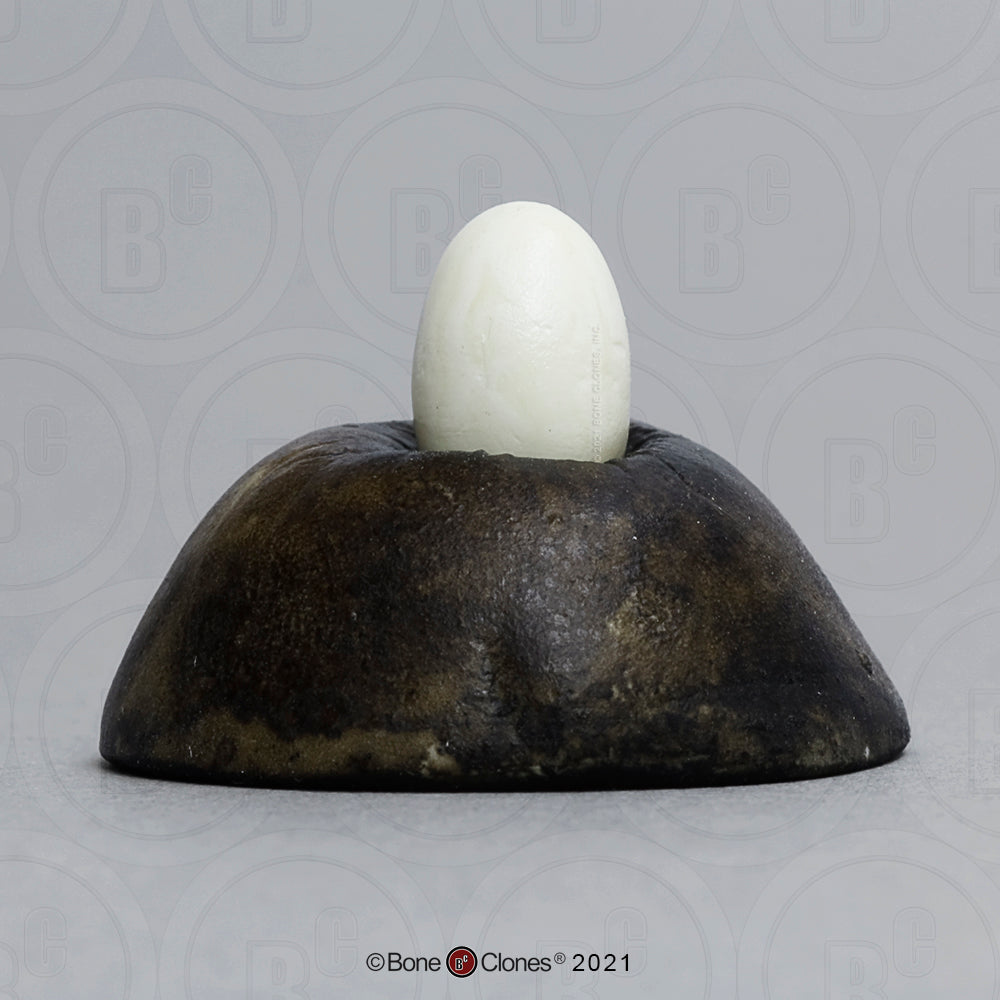Introducing the Bone Clones Bird and Platypus Eggs, replica egg models ideal for veterinary professionals and students.
The Platypus and the echidna are the only mammals to lay eggs. The female lays one or two eggs, which have an incubation period of about ten days. When the eggs hatch, the babies are tiny and are nursed for 3 to 4 months.
The male Mallard Duck is distinctive with his iridescent green head and yellow bill. Female Mallards lay between 10 and 12 eggs, once hatched the ducklings venture from the nest less than a day later.
The Raven is generally considered the most intelligent bird and is the largest of the crow family. They lay between 3 to 7 eggs which have an incubation period of around 20-25 days. The oval, slightly pointed eggs are pale blue and often speckled or blotched with brown markings.
Barn Owls often nest in barns, tree cavities, or cliffs. The female lays an average of 6 eggs, sometimes over 10, and builds the nest from her own regurgitated pellets. These pellets can be examined to learn about the owl’s diet.
The Osprey is found on every continent except Antarctica, making it one of the most widespread raptors, second only to the peregrine falcon. Ospreys typically mate for life and build large nests near water, often on treetops or rocks, adding to them yearly until they reach 5–6 feet across and up to twice as deep. The female lays 2–4 eggs, which are creamy white with brown blotches. Incubation lasts about 36–42 days.
The Great Horned Owl's name is inspired by the tufts above its ears. It is found in a wide variety of habitats, more than any other owl. It will nest in tree cavities, an old hawk's nest, buildings and forks in cactus. The female usually lays 2-3 eggs.
The Peregrine Falcon nests on cliff ledges or city buildings, using a simple scrape with no added material. Though migratory, it often returns to the same site, with some nests reused for over a century. Each year, the female lays 3–4 eggs, incubated by both parents for 33–35 days.
The Bald Eagle, weighing up to 14 pounds with a 7-foot wingspan, is one of North America's largest birds. Their nests are built near water from sticks and branches, growing larger each year often reaching 6 feet wide; one in Ohio weighed over two tons. The female lays 1–3 eggs, which are incubated by both parents for about 35 days.
The Golden Eagle, with a wingspan over 7 feet, is among North America's largest raptors. Pairs build large nests of branches on cliff ledges, often reusing them until they reach up to 6 feet wide. The female lays 1–4 eggs, typically 2, which are incubated for 41–45 days. Both parents share incubation and feeding duties.
The Ruby-Throated Hummingbird, the world’s smallest bird, lays two tiny white eggs, each about the size of a pea. They are incubated by the female for 12–14 days in a walnut-sized nest.
All Bone Clones Egg Models in this collection come with a stand for display.
As Bone Clones products are imported to order from the USA, we regret that all models are non-returnable unless faulty. Please speak to our Customer Services team for more information.


